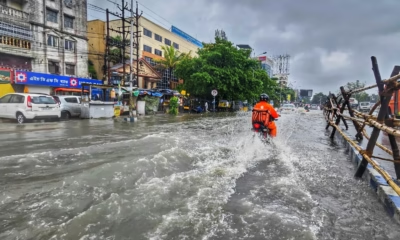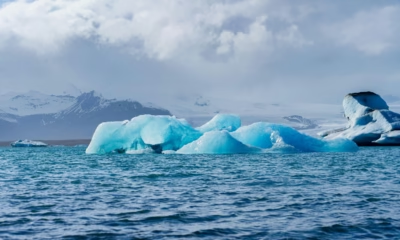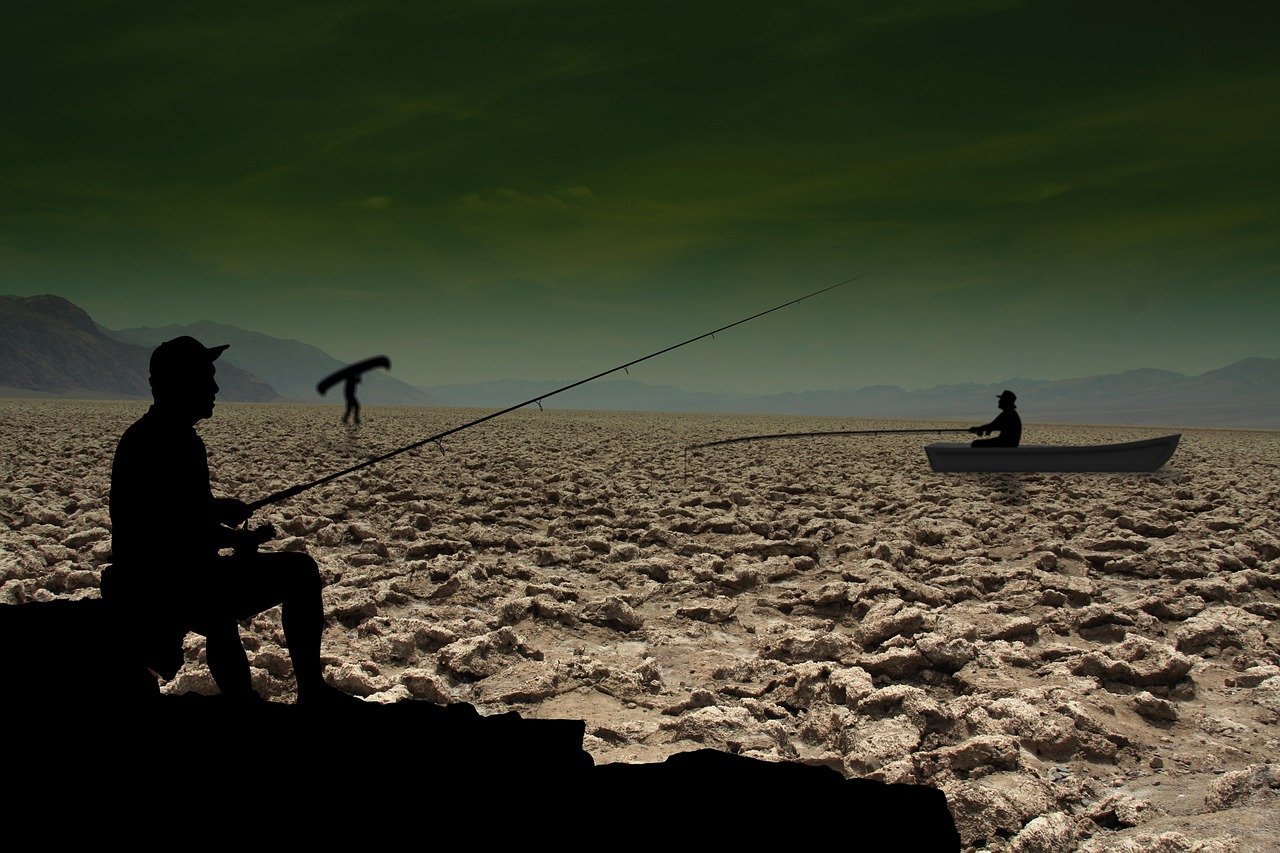
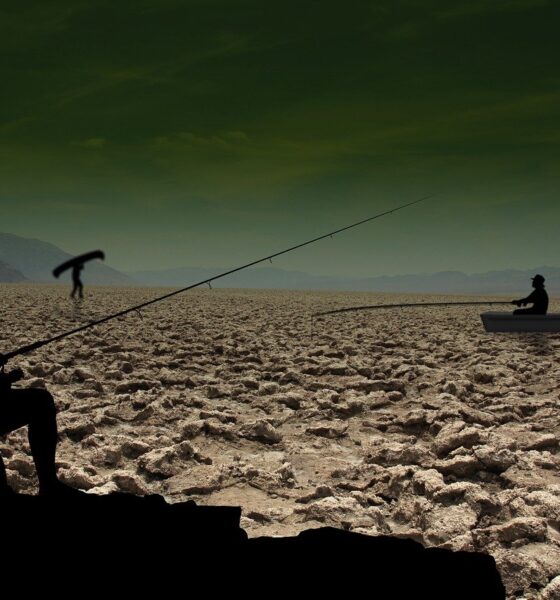
Earth
The wildfires, floods, and heatwaves: Understanding the science behind climate change
The stories we tell today will define the world that future generations inherit. Will they look back and see a world that acted in time, or a world that failed to change until it was too late?
In the heart of the Amazon rainforest, one of the most biodiverse places on Earth, a massive wildfire raged through the thick, lush greenery. This wasn’t just any fire; it was a calamity that consumed more than 17 million animals in its path, a chilling reminder of how the destruction of nature can reverberate across ecosystems. The Amazon, often referred to as the “lungs of the Earth,” plays a pivotal role in managing the planet’s climate. Yet, the actions of humanity—deforestation, illegal logging, and deliberate fires for agricultural purposes—have not only caused immeasurable loss to wildlife but have also accelerated climate change. The forest’s destruction led to a dangerous feedback loop, intensifying global weather patterns in ways that humans had never anticipated.
Fast forward to 2018, and the monsoon rains that battered Kerala, a state in India, were an equally dire omen. What began as an ordinary August downpour escalated into one of the deadliest floods in the region in almost a century. Rivers overflowed, breaking through dams and inundating vast swathes of land. Entire towns were submerged. Hundreds of lives were lost, and the devastation reached far beyond the physical damage, triggering social and economic upheaval. The aftermath left thousands homeless, as people sought refuge in makeshift shelters. The floods in Kerala were not an isolated incident; in fact, they were a warning from nature, signaling a world grappling with extreme weather events, made worse by human-induced climate change. The same was the case with 2024 Wayanad landslides.
And this global pattern of violent weather doesn’t stop in the tropics. In recent years, a blistering heatwave has swept across parts of North America. The US and Canada, known for their cold winters, have experienced record-breaking summer temperatures, an anomaly that scientists have linked directly to climate change. Oregon, once known for its temperate weather, saw the largest wildfire in its history, spurred by the heatwave. This was not just a local disaster—it was part of a larger, worrying trend in which global warming is creating the conditions for wildfires, floods, and heatwaves to proliferate at an unprecedented rate.
Climate change refers to significant, long-term shifts in weather patterns and temperatures.
These are not just isolated incidents. They are signs of a planet in distress, a planet experiencing the devastating effects of climate change, a phenomenon that is rapidly altering our environment and our lives.
The Science Behind the Crisis
Climate change refers to significant, long-term shifts in weather patterns and temperatures. These changes can manifest in a variety of ways: from prolonged droughts and unseasonal rains to extreme heatwaves and hurricanes. The root cause of today’s accelerated climate change is primarily human activity, particularly the burning of fossil fuels, deforestation, and industrial emissions, which release greenhouse gases like carbon dioxide into the atmosphere.
The Earth’s climate has always undergone natural variations—shifting from ice ages to warmer periods over millennia. However, what we are witnessing today is a much more rapid and intense change, driven by human actions. According to scientists, the Earth’s average temperature has risen by approximately 1.1°C since the late 19th century, with the past few decades seeing a rate of warming unprecedented in the geological record. The current trajectory suggests that global temperatures could rise by another 1-2°C by the end of the century, which would have catastrophic implications for both human and natural systems.
The impacts of this warming are already being felt globally. Melting ice caps and glaciers, rising sea levels, shifting weather patterns, and more frequent extreme weather events are some of the most visible signs. The Amazon rainforest, which once functioned as a massive carbon sink, is now a source of carbon emissions due to deforestation and wildfires. Meanwhile, heatwaves in parts of Europe and North America have reached previously unimaginable levels, set new temperature records and causing widespread harm.
A Global Phenomenon: From Kerala to Oregon
The devastating Kerala floods of 2018 were preceded by a series of warnings. The state’s weather patterns had been shifting, with increasingly unpredictable rainfall, leading to swollen rivers and the overflowing of dams. Once a relatively regular occurrence, floods in Kerala became more intense and frequent over time. Experts argue that climate change, through the intensification of the monsoon season and rising sea levels, has exacerbated the situation. But Kerala is not alone. Across the world, regions that were once resilient to extreme weather are now facing unprecedented levels of flooding, wildfires, and other disasters.
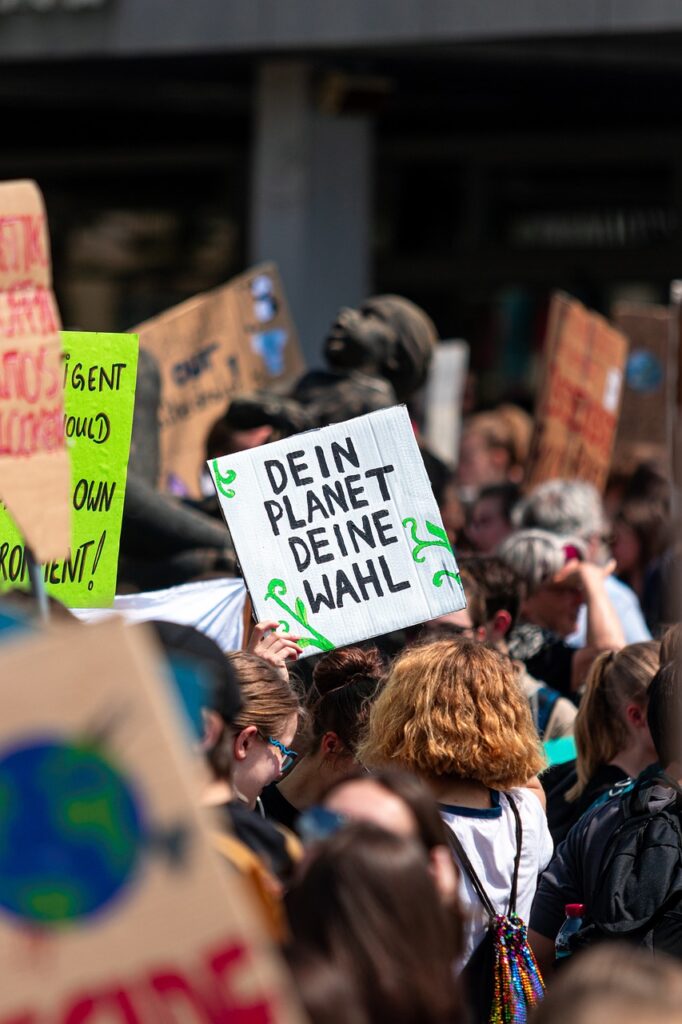
In 2020, when a record heatwave struck North America, temperatures in the Pacific Northwest soared to levels never seen before. Oregon, a state known for its temperate climate, reported its highest-ever temperatures. This heatwave triggered wildfires that devastated millions of acres of forest and caused significant loss of life. The fires were not simply a result of hot weather, but of the conditions created by climate change—dry forests, extreme heat, and shifting weather patterns all came together to fuel the fires.
Similarly, across the Atlantic, parts of Europe experienced an unusually harsh summer, with wildfires ravaging Spain, Portugal, and southern France. These fires were not natural events but were made more intense by the warming climate. Even in regions like Siberia, where wildfires were once rare, extreme temperatures and dry conditions have now turned vast areas into tinderboxes.
The Growing Threat: What the Future Holds
The world’s climate is now so volatile that extreme weather events are no longer an anomaly. They are becoming the new normal. Rising temperatures are leading to extreme heatwaves, higher sea levels are threatening coastal communities, and shifting weather patterns are disrupting ecosystems and agriculture. We are seeing longer droughts, more intense storms, and unpredictable rainfall, all of which are affecting millions of people across the globe.
In the coming decades, the situation is expected to worsen. According to scientists, we are on track to exceed a 1.5°C rise in global temperatures by 2050, with the potential for far-reaching consequences. Sea levels are projected to rise, displacing millions of people, while agriculture will suffer due to unpredictable rainfall and extreme temperatures. Already vulnerable regions, such as the Pacific Islands, will be the hardest hit, while major cities like New York, Mumbai, and Jakarta are all at risk of flooding.
Rising Temperatures and Their Far-reaching Effects
Even small changes in the Earth’s temperature can have profound impacts. A temperature-increase of just 1.5°C could lead to the irreversible melting of polar ice caps, resulting in a rise in sea levels that would submerge entire cities. Rising temperatures can also trigger the release of methane from thawing permafrost, a potent greenhouse gas that could accelerate global warming even further.
The stories from the Amazon, Kerala, Oregon, and beyond serve as stark reminders that the climate crisis is not a future problem—it is a present-day reality
One of the most troubling aspects of this warming is how it is changing the planet’s ecosystems. Species that once thrived in specific temperature ranges are now struggling to survive. Many are migrating to cooler areas, while others face extinction. As habitats shrink and weather patterns change, the very fabric of biodiversity is at risk.
Can We Change Course?
The question now is: Can we reverse or at least slow down these changes? While the situation is dire, scientists and environmentalists believe that immediate action can still mitigate the worst impacts of climate change. Transitioning to renewable energy sources, reducing deforestation, and investing in sustainable agricultural practices are essential steps. Governments, corporations, and individuals all have a role to play in ensuring that we shift towards a more sustainable and resilient future.
There is still time to act, but the window is closing fast. The more we delay, the more severe the impacts will be. The stories from the Amazon, Kerala, Oregon, and beyond serve as stark reminders that the climate crisis is not a future problem—it is a present-day reality that we can no longer afford to ignore.
A Global Call to Action
From the scorched rainforests of the Amazon to the flooded streets of Kerala and the heat-baked forests of Oregon, climate change is no longer a distant concept. It is here, now, and it affects all of us. But the power to change our future lies in our hands. By making sustainable choices, demanding policy changes, and holding accountable those who contribute to the climate crisis, we can begin to heal our planet before it’s too late.
The stories we tell today will define the world that future generations inherit. Will they look back and see a world that acted in time, or a world that failed to change until it was too late? The choice is ours.
Earth
Global Warming Supercharges India’s Monsoon, Drives Rainfall Extremes: New Analysis finds
Global warming is intensifying India’s monsoon, driving unprecedented rainfall extremes and floods across large parts of the country in 2025
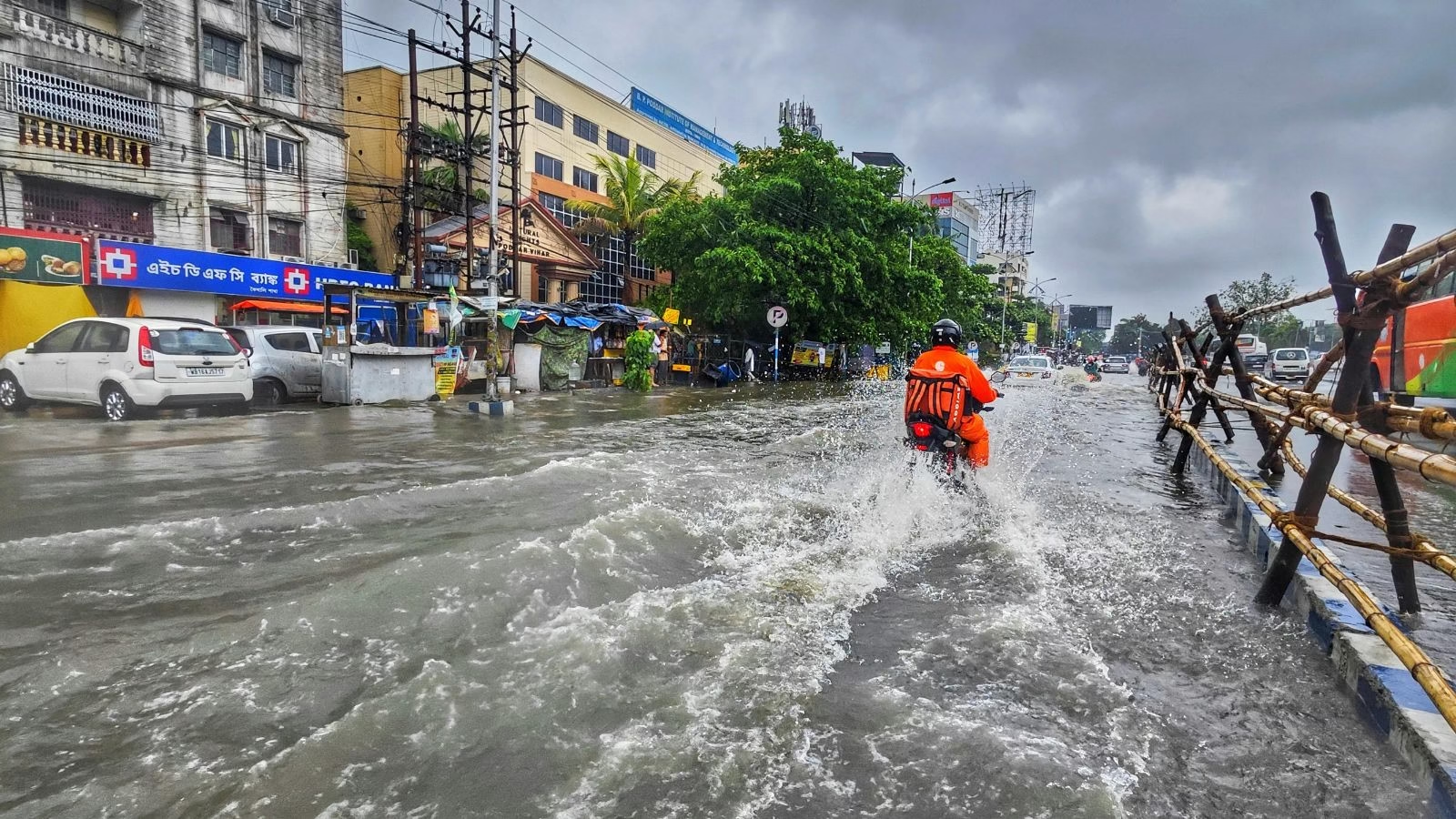
India’s 2025 monsoon turned out to be one of the most extreme in recent memory, with nearly half of the country facing abnormal rainfall. An analysis by Climate Trends, based on India Meteorological Department (IMD) data, reveals that global warming is fundamentally reshaping how and where rains fall across the subcontinent.
In the first week of October, EdPublica published a ground report detailing how torrential rains resulted in floods and waterlogging, crippling agriculture in the rural areas of Madhya Pradesh. Now, this localized crisis is mirrored by a far broader pattern of intensifying monsoon extremes revealed in the Climate Trends analysis.
Climate Change Intensifying the Monsoon
“The monsoon is no longer what it used to be — global warming is now the biggest driver,” said Dr. K.J. Ramesh, former Director General of IMD. The Climate Trends report finds that between 2016 and 2025, five out of ten monsoons were above normal, with 2025 marking yet another year of widespread excess rainfall.
Nearly 45 percent of India’s landmass recorded extreme rainfall events this year, highlighting a shift towards shorter, more intense downpours. “The number of rainy days is going down, but the intensity of those showers is far higher,” Ramesh added.
Regional Contrasts
According to Climate Trends’ district-level analysis, northwestern India saw rainfall 27 percent above normal, its highest since 2001. Ladakh and Rajasthan topped the list with record-breaking surpluses of 342 percent and 60–70 percent respectively. Central India, including Gujarat, Maharashtra, and Madhya Pradesh, also registered strong performance.
In contrast, East and Northeast India suffered a 20 percent deficit, marking their ninth below-normal season in a decade. States like Assam, Arunachal Pradesh, and Bihar faced major rainfall shortfalls, while Kerala saw a -13 percent anomaly — a rare dry phase for the usually rain-abundant state.
Floods and Human Toll
The Climate Trends analysis, drawing from IMD’s extreme weather records, reports 2,277 heavy rainfall and flood incidents this year, resulting in 1,528 deaths nationwide. Madhya Pradesh alone recorded 290 fatalities. The Ganga Basin saw 32 of 59 “Highest Flood Level” breaches this monsoon, with August emerging as the most flood-intensive month.
“These Himalayan floods are not typical for the monsoon season,” observed Professor A.P. Dimri, Director of the Indian Institute of Geomagnetism. “They are the result of compounded precipitation — monsoon rains, local orographic effects, and glacial melt acting together.”
The Science Behind a Changing System
Researchers point to several warming-driven factors. The rise in sea surface temperatures over the Arabian Sea and Bay of Bengal has increased atmospheric moisture, fuelling heavier bursts of rain. “The atmosphere now carries more moisture than in earlier decades. Bigger clouds are forming, leading to torrential events,” said Mahesh Palawat, Vice President of Meteorology and Climate Change at Skymet Weather.
Western Disturbances, once confined to winter, are now merging with summer monsoon systems. “They are expanding northward, overlapping with monsoon circulations and enhancing rainfall,” said Dr. Argha Banerjee of IISER Pune.
Himalayan Alarm and Adaptation Need
Rapid glacial melt is compounding the impact of these extreme events. “Snow cover is depleting quickly due to rising temperatures,” Banerjee explained. “This magnifies river responses to sudden rain bursts or cloudbursts.”
The report notes that heavy rainfall events in India have nearly tripled since 1950, and all indicators suggest continued intensification. “These patterns aren’t short-term,” warned Dr. Ramesh. “We’re entering an era of wetter, more erratic monsoons — and adaptation is our only option.”
COP30
Earth Nears Dangerous Tipping Points Amid Rapid Warming, Urgent Action Needed at COP30
The Global Tipping Points Report 2025 warns of imminent climate tipping risks at 1.5°C warming, urging urgent global action at COP30 to prevent irreversible impacts and accelerate sustainable transitions.
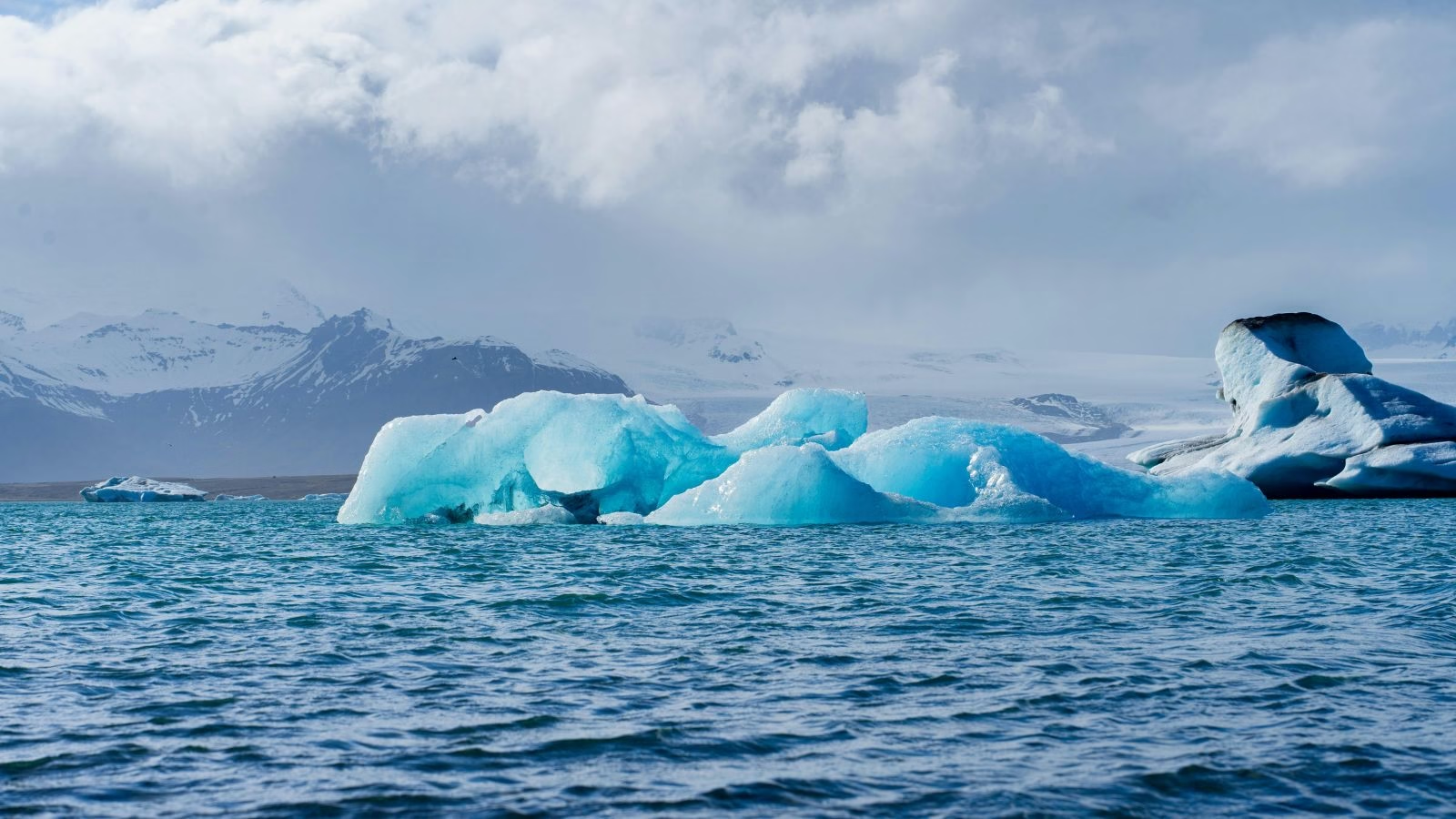
As global warming edges perilously close to the 1.5°C threshold, a new scientific report warns that Earth’s vital ecosystems are approaching irreversible tipping points with catastrophic implications for billions of people worldwide. Released ahead of the COP30 climate summit in Belém, Brazil, the ‘Global Tipping Points Report 2025‘ issued by leading researchers from the University of Exeter and international partners reveals an urgent call for unprecedented global cooperation to prevent cascading system collapses.
“Already at 1.4°C of global warming, coral reefs face unprecedented dieback, while polar ice sheets threaten multi-metre sea level rise,” states the report. “The Amazon rainforest risks widespread dieback below 2°C, jeopardizing biodiversity and the livelihoods of over 100 million people.” The report highlights the intertwining threats posed by climate change, deforestation, and feedback loops that amplify warming risks, including potential collapse of the Atlantic Ocean circulation that governs weather patterns across Europe and Africa.
Urgency is paramount. The report emphasizes that exceeding 1.5°C—even briefly—significantly increases the odds of triggering multiple tipping points with cascading effects that disrupt food security, water availability, and economic stability globally. Authors warn that waiting until tipping points are crossed before acting is a grave mistake; instead, immediate measures to halve global greenhouse gas emissions by 2030 and achieve net zero by 2050 are essential.
The report also highlights emerging positive tipping points fueled by rapid adoption of solar power, electric vehicles, and nature-positive initiatives as crucial leverage points for accelerating sustainable transformation. “Positive tipping points can cascade across sectors, driving exponential change,” the researchers note, urging coherent policy mandates, finance mobilization, and inclusive governance to unleash these potentials.
In a message from Brazil, host of COP30, the report’s foreword calls for shifting the narrative from fear to hope: “We must prevent irreversible harm but equally trigger positive tipping points that propel societies towards low-carbon and climate-resilient development.” This vision centers the Global South’s pioneering efforts in regenerative agriculture, forest restoration, and climate finance innovation.
Critical governance challenges remain as the report stresses the need for anticipatory, justice-centered, multi-scale approaches linking human rights with climate action. International cooperation, transparent monitoring, and empowering Indigenous peoples and local communities stand out as pillars to navigate this precarious climate crossroads.
COP30 represents a decisive moment. The report concludes, “The time to act is now. United, we can reverse dangerous climate trajectories and trigger a global wave of renewal. Let us change by choice, together.”
Earth
Global Report Reveals Planetary Health Communication Crisis Fuelled by AI and Misinformation
Global report reveals planetary health communication crisis fuelled by AI misinformation threatens climate action and vulnerable communities.
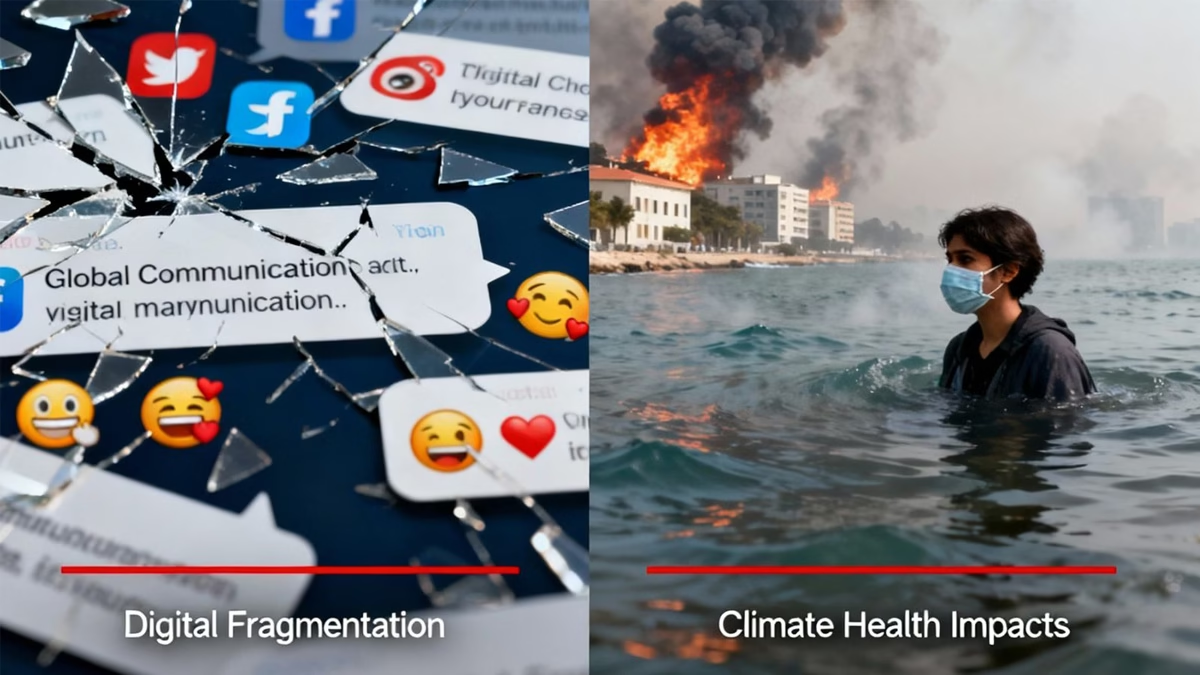
A new report launched yesterday at the Planetary Health Annual Meeting in Rotterdam has exposed a critical failure in global health communication that experts warn could undermine humanity’s response to interconnected climate and health crises.
The comprehensive study, titled “Voices for Planetary Health: Leveraging AI, Media and Stakeholder Strengths for Effective Narratives to Advance Planetary Health,” represents the first systematic mapping of how planetary health issues are communicated worldwide. Developed by the Sunway Centre for Planetary Health at Sunway University and implemented by Internews, the research reveals that communication—not scientific knowledge—has become the critical bottleneck preventing effective action on environmental health emergencies.
Fragmented Messages
The study’s findings paint a troubling picture of the global communication landscape. Despite mounting scientific evidence about the interconnected health threats from climate change, biodiversity loss, and pollution, public discourse remains severely fragmented and increasingly vulnerable to misinformation.
“We know the science. What we lack is a shared story that resonates across communities, cultures, and decision-makers,” said Prof. Dr. Jemilah Mahmood, Executive Director of the Sunway Centre for Planetary Health.

The research, which analyzed 96 organizations and individuals across nine countries through in-depth interviews and social media analysis, found that planetary health communication efforts are often siloed within specific disciplines, limiting their reach and effectiveness. Many initiatives depend on short-term projects with minimal resources, leaving little capacity to build sustained narratives that could drive meaningful policy change.
AI: Double-Edged Sword
Perhaps most concerning is the report’s revelation about artificial intelligence’s dual role in planetary health communication. While AI presents opportunities for expanding access to reliable information and supporting multilingual communication, it also poses significant risks for spreading misinformation and deepening inequality.
Recent studies have documented how generative AI can be weaponized to create climate misinformation through bot-generated tweets mimicking climate deniers, deep-fake images of environmental activists, and sophisticated long-form content espousing false narratives. The technology can also amplify existing biases, with research showing that AI systems often privilege Western knowledge over Indigenous perspectives, potentially contributing to “global conservation injustices”.
The environmental cost of AI itself compounds the problem. Data centres now consume around 1.5% of global electricity, with AI-focused facilities requiring as much power as energy-intensive aluminium smelters. Training large language models like GPT-4 requires three to five times more energy than GPT-3, which already consumes enough electricity to power 120 American homes for a year.
Marginalized Communities Bear the Heaviest Burden
The communication crisis disproportionately impacts the world’s most vulnerable populations—precisely those most affected by planetary health emergencies. The report emphasizes that marginalized communities, including people of colour, low-income groups, and Indigenous peoples, face the greatest challenges in both accessing reliable health information and adapting to climate-related health threats.
Multiple studies confirm that racially and socioeconomically marginalized communities in the United States experience greater impacts from climate-related health events, including extreme heat, flooding, and respiratory illnesses. Children of colour are particularly vulnerable, experiencing disproportionate health impacts from climate exposures compared to white children.
The communication barriers compound these vulnerabilities. Scientific jargon makes planetary health concepts inaccessible to general audiences, while language delivery challenges—including complex English or lack of translation—further limit reach to non-English speaking communities.
Despite the communication challenges, the report identifies young people as both critical audiences and powerful communicators, particularly through digital platforms. Youth activists are increasingly using social media to drive environmental awareness and policy pressure, though they face significant obstacles including algorithmic bias and platform censorship concerns.
The research found that LinkedIn was most effective for professional audiences, while Instagram and TikTok showed promise for youth engagement, despite trust issues on some platforms. However, maintaining consistent and meaningful social media presence remains challenging for many organizations working with limited resources.
Strategic Solutions
To address these critical communication failures, the report proposes a revolutionary two-pronged strategy combining “strategic communication” to influence policy with “democratic communication” to foster community-level dialogue.
The approach rests on six core principles: ensuring marginalized voices shape the agenda; presenting planetary health as an integrated framework rather than disconnected crises; building bridges between disciplines and geographies; anticipating backlash and protecting communicators; tailoring messages to cultural contexts; and working within existing cognitive frameworks.
The research team has developed practical playbooks for different stakeholder groups and monitoring frameworks to track communication effectiveness—tools they argue could be transformative if adopted widely across the planetary health community.
“Communication is not just a tool; it is a catalyst for change. By speaking with courage, coherence, and compassion, and equipping all actors to tell inclusive stories, we can turn knowledge into action and ensure no voice is left behind,” said Jayalakshmi Shreedhar of Internews.
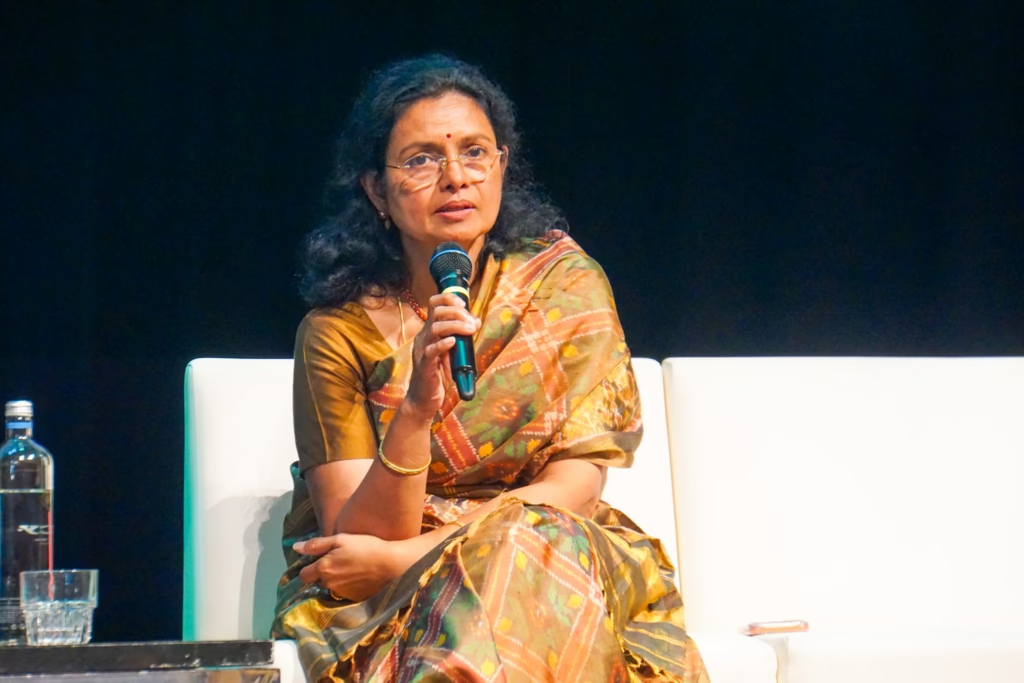
The report’s launch comes at a critical moment, as policy rollbacks in major economies threaten to undermine decades of environmental progress. The study documents how recent reversals, including the United States’ withdrawal from climate agreements and defunding of health agencies, have weakened the systemic response needed to address planetary health crises.
With six of nine planetary boundaries already crossed and climate-related health impacts accelerating globally, experts warn that the window for effective communication and coordinated action is rapidly closing. The success of humanity’s response to interconnected environmental and health crises may ultimately depend on our ability to tell a coherent, compelling story that mobilizes action across all levels of society.
-

 Space & Physics5 months ago
Space & Physics5 months agoIs Time Travel Possible? Exploring the Science Behind the Concept
-

 Know The Scientist5 months ago
Know The Scientist5 months agoNarlikar – the rare Indian scientist who penned short stories
-

 Society4 months ago
Society4 months agoShukla is now India’s first astronaut in decades to visit outer space
-

 Earth5 months ago
Earth5 months agoWorld Environment Day 2025: “Beating plastic pollution”
-

 Society4 months ago
Society4 months agoAxiom-4 will see an Indian astronaut depart for outer space after 41 years
-

 Society6 months ago
Society6 months agoRabies, Bites, and Policy Gaps: One Woman’s Humane Fight for Kerala’s Stray Dogs
-

 The Sciences4 months ago
The Sciences4 months agoHow a Human-Inspired Algorithm Is Revolutionizing Machine Repair Models in the Wake of Global Disruptions
-
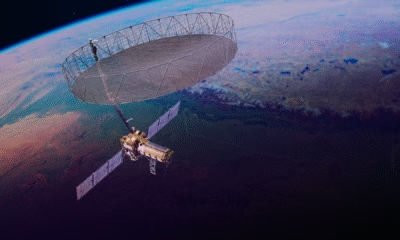
 Space & Physics3 months ago
Space & Physics3 months agoJoint NASA-ISRO radar satellite is the most powerful built to date

